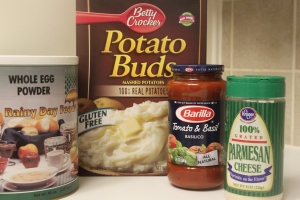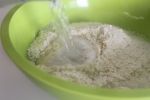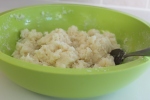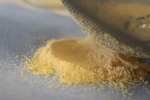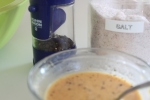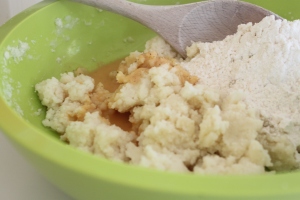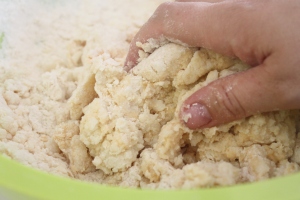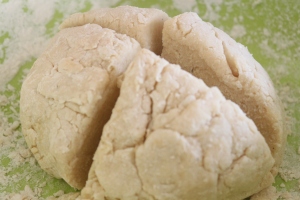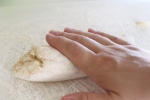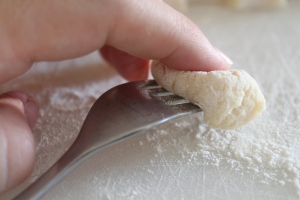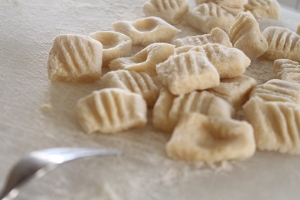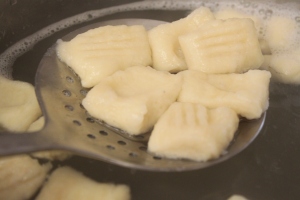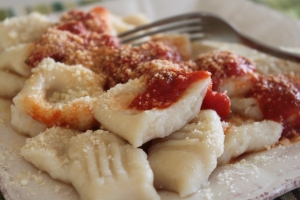Emergencies: Home Water Storage and Emergency Disinfection Before an Emergency
Amount of Water to Store
The Department of Environmental Quality, Division of Drinking Water recommends water storage of 1 gallon per person per day for 2 weeks. This is based on 2 quarts or ½ gallon per person per day for drinking water and food pre parathion, and another 2 quarts or ½ gallon per person per day for other limited uses such as hand washing, teeth brushing and dishwashing. (This is a total of 14 gallons per person for 2 weeks.)
A normally active person needs to drink at least 2 quarts (1/2 gallon) of water each day. Hot environments and intense physical activity can double that amount. Children, nursing mothers and people suffering from disease or injury may need more water. Immune compromised people may want to take extra precautions to minimize their risk in an emergency.
Supplies Needed Before an Emergency
- Food grade containers for storage of water
- Funnel
- Filters: coffee filters, clean cheesecloth, teal towel, or pillowcases
- Eyedropper
- Unscented chlorine bleach (5.25% sodium hypochlorite)
- Large clean pan with lid for boiling water
- If storing water in a 55 gallon drum, a pump is needed
- Purification device, back packer filters
- Camping stove to boil water
Storage Containers
Water should be stored in containers manufactured for food use.
- A 5 gallon heavy duty plastic container with spigot to dispense water (weighs approximately 42 pounds when full).
- A 6 gallon Mylar water storage bag, impermeable to odor, gas and light, contained in a cardboard box for easy stacking. Durable (weights about 50 pounds).
- A 2 liter plastic drink container with screw on lid.
- A 55 gallon drum that has not stored toxic materials (weighs 460 pounds when full).
- A thermos type container.
- A 1 gallon size glass jug (padded with newspaper).
- Water “canned” in regular canning jars and processed for 20 minutes (repack in cardboard box and pad with newspapers).
Never use any containers that have held toxic substances.
Plastic bleach bottles and gallon milk containers are generally manufactured with non-durable plastic that promotes biodegradability and is undesirable for long term water storage. Water stored in non-durable plastic containers may become toxic over time from breakdown products from the plastic container walls.
The disposable, plastic milk bottle is thin-walled and tends to develop leaks easily. Liquid chlorine bleach bottles are made of thicker polyethylene plastic and may be used for water storage if the empty bottles are thoroughly rinsed with hot water and allowed to dry. However, the use of bleach bottles for water storage is not recommended, because of the potential danger of accidentally drinking bleach instead of water. If bleach bottles are used for water storage, remove the bleach label and write “WATER” indelibly across the bottle. Children may mistakenly associate the size and color of bleach bottles with acceptable sources for drinking water and mistakenly drink bleach. As such, bottles must be positively identified, and bleach must be kept out of the reach of children.
If plastic containers are used, care should be taken to assure that they are made of plastic approved for food contact by the Federal Food and Drug Administration (FDA). Polyethylene plastic is approved for food contact and is commonly used for containers of various sizes, including large 55 gallon drums. Certain types of plastic containers are not intended for food contact (such as vinyl plastic waterbeds or trash containers) and may leach undesirable chemicals into stored water. Leaching from approved plastics into water is negligible.
Preparing Water for Storage
Stored water must be clean water. Use the best quality available for water storage. Water must be from a system with a Division of Drinking Water “Approved” rating. Water stored in thoroughly clean plastic or glass containers can be chemically disinfected for long term treating each gallon with 4 to 5 drops of liquid chlorine bleach (Clorox or Purex type bleaches, containing 4% to 6% sodium hypochlorite). One teaspoon of bleach disinfects 5 gallons of water. Allow 20 to 30 minutes before drinking. The level of treatment will prevent growth of microorganisms during storage. Most municipal water storages are already disinfected so no additional treatment is necessary. Fill clean food grade container with tap water and screw on lids.
Storage Conditions
Store water containers away from cleaning supplies, fertilizers and other products with strong odors. These odors could be absorbed by the storage containers and transferred to the water.
Water stored in plastic containers should be filled to the top so there is no air space and should be stored in a cool, dry location away from petroleum and insecticide products, and away from strong odor food or perfumed products.
Vapors from these substances could permeate the plastic and affect the water. Thick walled polyethylene containers are significantly less permeable to vapors than are thin walled containers.
Use of Stored Water
Once the container is opened, use the water rather than restoring it. If stored water has a flat taste, pour it back and forth between two containers several times. Rotate water every 1 to 2 years.
Store as much water as possible, more than the bare minimum (especially in desert and hot climates). Be certain to label each container so there will be no questions about its contents. Include the date and information on the method of disinfection used.
After an Emergency
Emergency Inside Water Sources
- Water heaters.
- Soft water tanks.
- Melted ice cubes.
- Toilet tank (not bowl) provided no chemical sanitizers are used.
If a disaster catches you without a stored supply of clean water, you can use the water in your house piping system, your hot water heater and even ice cubes. Know the location of your house’s water shut off valve. In a disaster in which your water company’s supply of water to your house has been interrupted (e.g., broken water mains in the streets), shut off water supply into your house to prevent backflow of contaminated water. To use the water in your piping, let air into the plumbing by turning on the faucet in your house at the highest level. A small amount of water will trickle out. Then, leaving the highest faucet on, obtain water from the lowest faucet in the house.
To use water in your hot water heater, first turn off the electricity or gas supply, and then close off the cold water supply line to the water heater. Open the drain at the bottom of the tank and start the water flowing by turning on a hot water faucet somewhere else in the house. Collect the water containers and disinfect each gallon with 4 – 5 drops of liquid bleach. Allow 20 to 30 minutes before drinking. (Note: If the water is cloudy and/or from an unsafe origin, 16 drops of liquid chlorine bleach is recommended.) You can use water in the tank of your toilet (not the bowl). Disinfect as with water from the water heater.
Some water sources may have chemical contamination that makes them unacceptable for drinking. For example, waterbed mattresses usually contain organic chemicals in the wall plastic and biocidal chemicals in the water to prevent algal, fungal and bacterial growth. These various chemicals can make the water unsafe to drink. During an emergency such water may be used for hand washing and laundering.
Emergency Outside Water Sources
- Rain water.
- Ponds and rivers.
- Untested wells and springs.
Some emergencies may warrant obtaining water from sources outside the home. The hazards of using water, including ice and snow, of unknown quality needs to be carefully weighed against the obvious life sustaining need for drinking water. Even crystal clear, mountain stream water can be contaminated with disease causing parasites such as giardia. Sterilization or disinfection can reduce the microbiological hazard of water of unknown quality, but there is no safe method for reducing the chemical hazard (e.g., toxic chemicals and radioactive materials) of water of unknown quality. If water is cloudy, chemical disinfection must be supplemented by some kind of filtration or heat sterilization (20 to 30 minutes of boiling) to assure complete destruction of disease causing organisms. (Note: If water is cloudy and/or from an unsafe origin, 16 drops of chlorine bleach is recommended.)
In addition to having a bad odor and taste, contaminated water can contain microorganisms that cause diseases such as dysentery, typhoid and hepatitis. You should disinfect all water of uncertain purity before using it for drinking, food preparation or hygiene.
There are many ways to disinfect drinking water. None of the listed methods are perfect. The methods described below will kill most microbes, but they will remove very few chemical contaminants. Before water is disinfected, let any suspended particles settle to the bottom of the container, or strain the water through layers of paper towels, filters such as coffee, clean cheese cloth, or clean cloth into a clean container.
Better clarification can be obtained by drawing cloudy water through a “capillary siphon”.
A capillary siphon can be constructed by rolling a small, clean, terry cloth towel into a long roll. Place one end of the roll into a container of cloudy water. Drape the rest of the roll over the edge of the container so that it hangs free from the container’s sidewall. Be sure the free hanging (dry) end of the towel extends below the water level by several inches. Place a clean container below the free hanging end. Soon water from the upper container will wet the whole towel as the capillary action draws water through the towel to the lower container. With cloudiness removed, chemical disinfection can be more effective in destroying disease causing organisms.
Methods of Disinfection
Boiling
Boiling is the safest method of disinfecting water. It is preferred over any method of chemical disinfection because most disease causing microorganisms cannot survive the heat of the sterilizing boil. Water must be heated to boiling and held in a vigorous rolling boil for 5 minutes minimum (preferably 10 to 20 minutes). Let the water cool before drinking. Boiled water will taste better if you put oxygen back into it by pouring the water back and forth between two clean containers. This will also improve the taste of stored water.
Chemical Disinfection
Chemical disinfection of water is an acceptable alternative to heat sterilizing, but only if the water is clear. Disease causing organisms, such as viruses, can “hide” inside the microscopic dirt particles that cause cloudiness in water. They can thereby escape the action of the disinfecting chemical and remain capable of producing disease.
Chemical disinfection is less reliable than disinfection via boiling because of several different factors. For example, the more organic matter there is in the water, the more chemicals are required. The colder the water is, the longer the “contact time” (the length of time between addition of disinfecting chemicals to the water and use of the water) should be. Additional factors affecting the success of disinfection includes the amount and type of chemicals used, water pH (how acidic or basic the water is), and types of disease causing organisms in the water.
Liquid Bleach
You can use household liquid bleach to kill microorganisms. Use only regular household liquid bleach that contains 5.25% sodium hypochlorite. Do not use scented bleaches, color safe bleaches or bleaches with added cleaners. Each gallon of water should be treated with 4 – 5 drops of liquid chlorine bleach or 16 drops of liquid chlorine bleach if the water is cloudy. This is just under ¼ of a teaspoon per gallon. One teaspoon of bleach disinfects 5 gallons of water. Treated water should be thoroughly mixed and allowed to stand for 30 minutes before using. A slight chlorine odor should be detectable in the water. If it is not, repeat the dosage and let it stand another 15 minutes before using. Treated water may have a slight chlorine taste, but this is additional evidence of safety.
Since liquid chlorine bleach loses strength over time, only fresh bleach should be used for water disinfection. For bleach that is 1 to 2 years old, the dosage should be doubled. Bleach older than two years should not be used unless absolutely necessary because of uncertainty as to how much the active ingredients have deteriorated.
Iodine Tables
Iodine tablets have the advantage of being more effective against amoebic dysentery cysts and certain other intestinal parasite cysts than chlorine-based disinfectants such as sodium hypochlorite or Halazone tablets. Sporting good stores commonly carry iodine tables. Be certain iodine tablets are fresh, since they lose effectiveness with age. Fresh tablets have a gray color. They have a shelf life of approximately 3–5 years unopened. The label should show an EPA registration number. Often iodine tablet containers carry labels recommending restrictions on use by pregnant or lactating women. Check the label before purchasing the tablets. Follow instructions on the label, mixing thoroughly and allowing adequate “contact time”. The iodine tablet should impart a light yellow to tan color to the water and a slight odor.
Halazone Tablets
Halazone tablets (4 dichlorosulfamyl benzoic acid) for emergency water disinfection are commonly carried by pharmacies and drug stores. The label should show an EPA registration number. Be certain to note the expiration date since the shelf life is only about 2 years. According to the manufacturer: “It is important that the containers are tightly closed to prevent the absorption of moisture from the air. If decomposition of the tablets should occur, they take on a yellowish appearance, have a strong objectionable odor, and of course, should not be used”.
Chemical disinfection, liquid bleach, iodine tablets, and Halazone tablets will not remove cryptosporidium
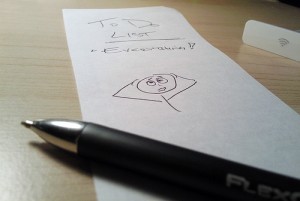
![IMG_0362[1]](http://foodstorageandsurvival.com/wp-content/uploads/2012/04/IMG_03621-e1334083786360-225x300.jpg)


 Two ways to help your kids understand money
Two ways to help your kids understand money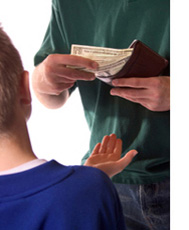 Responsibility of ownership
Responsibility of ownership